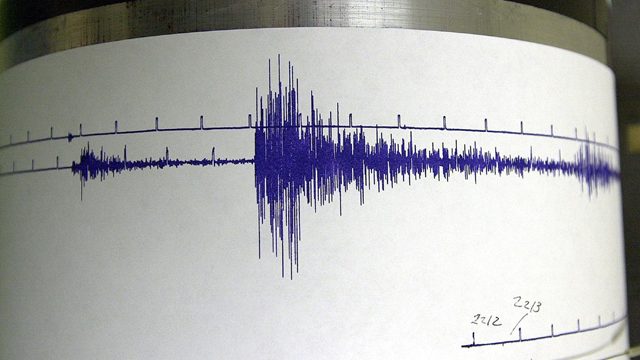A year after a deadly fire broke out at a warehouse space in Oakland killing 36 people, city officials continue to grapple with ways to improve the safety of unpermitted warehouse spaces, while avoiding displacement of the artists that often live there.
A recent city report summarizes steps the city has taken since the deadly fire, including the formation of a fire safety task force to keep the city on track in the wake of last year’s tragedy. Under direction of the task force, the city hired six new inspectors to its Fire Prevention Bureau and three inspectors to its Building Code Enforcement staff.
The city is also in the process of rolling out a new electronic system to track inspections across the various city departments that conduct them, including fire, police, building and code enforcement.
“The city has taken its responsibility to continually be improving upon its systems,” said Oakland Mayor Libby Schaaf.
Schaff says these steps are proof that the city is safer today than it was before the Ghost Ship warehouse fire, but a major challenge in taking these steps has been finding ways to ensure the city’s artists aren’t forced out in the process.
A month after the Ghost Ship fire, Mayor Schaaf issued an executive order aimed at avoiding evictions and preserving affordable housing for artists.
Local artists say they have felt the impact of the city’s new policies.
Local
The city report identified 19 warehouse spaces where residents were living without the proper permits, and people were evicted from five of those properties. The city report does not indicate how many individuals were evicted.
Tanya Retherford is one of them. She and the 13 other people lived at 1190 28th Street, which they called Castle Von Trapp. Three days after the Ghost Ship fire, city officials got word people were living in the space, even though it wasn’t permitted for residential use. The property owner subsequently kicked them out.
Retherford and some of her former housemates joined forces with architect Thomas Dolan to convert an empty West Oakland warehouse into a code-compliant ‘live-work’ space. Dolan literally wrote the book on live-work spaces, undertaking a number of live-work renovations. He and the former Castel Von Trapp residents hope their new warehouse will serve as a model for other similar spaces across the city.
Dolan said he believes hundreds of artists have been displaced since the city has cracked down on unpermitted warehouse spaces following the Ghost Ship fire.
“Where do tenants go?,” he said. They’ve had an incredibly tough time.”
Mayor Schaaf says the onus lies with property owners.
“I’m disappointed that more property owners didn’t take us up on our offer to work collaboratively and to not displace residents, “ Schaaf said.
Local artists and activists NBC Bay Area spoke to said in many cases the city never made it clear that property owners could legalize their buildings. They say because of that, owners kicked tenants out in fear they’d get in trouble.
Immediately following the Ghost Ship fire, questions were raised about why the city failed to shut down the space, given evidence that city officials were aware it had been converted into an illegal residence by master tenant Derick Almena.
“The lack of enforcement at the Ghost Ship warehouse was primarily driven by the fact that the management at that building worked very hard to evade government notice,” Schaaf said.
When The Investigative Unit asked Mayor Schaaf if the city shared any responsibility for failing to inspect the building or follow up on complaints, Schaaf dodged the question and talked about improvements the city has undertaken since the deadly fire.
“That’s a big part of what we’ve focused on in the last year,” Schaaf said. Creating a better risk assessment model to try to uncover properties that are falling under the radar screen.”
Joe DeVries, assistant to the City Administrator and head of the city’s new task force, says the members are looking at how to change the city’s building code so unpermiited communal living spaces can establish legal occupany - what the city calls a path to compliance.
DeVries says the city is considering how to give public loans to owners who commit to making safety upgrades while keeping rents affordable.
When it comes to violations at commercial spaces, the city still has 21 active cases. Only one property has a compliance plan on file.
For Retherford and Dolan, building their vision of a safe communal live-work space is the best answer to Oakland’s housing crisis. They hope their efforts can be the first concrete step in the wake of the Ghost Ship tragedy to help artists remain in Oakland.
“Our job really is to preserve that,” Dolan said.
If you have a tip for the investigative unit, email theunit@nbcbayarea.com.
Follow Liz Wagner on Facebook https://www.facebook.com/LizWags/ and Twitter https://twitter.com/lizwags.



